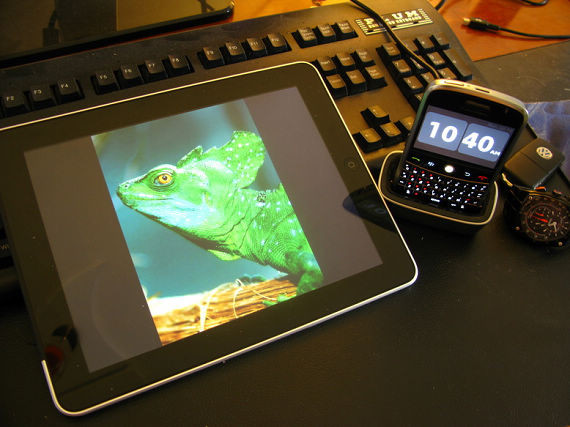record mode
luyued 发布于 2011-01-04 05:17 浏览 N 次感谢夜莺的提示,让我这两天开始研究了下record mode。
在SDN上看了些资料,来整理一下写下来,如有错误以后发现了再改正。
大体上来说,record mode分为三大类。
不过我还是决定把所有的都一个个打到这里来,不想copy,自己打一遍更有个印象。
空 delta only via full upload (ODS or Infopackage selection)
A ALE Update Pointer(Master data)
ABR Complete Delta with Deletion Flag via Delta Queue(Cube-Comp)
ABR1 Like Method "ABR" but Serialization only by Requests
ADD Additive Extraction Via Extracto (e.g LIS Info Structures)
ADDD Like "ADD" But Via Delta Queue(CUBE-Compatible)
AIE After-Images Via Extractor(FI-GL/AP/AR)
AIED After-images with Deleteion Flag via Extractor(FI-GL/AP/AR)
AIM After-images via delta queue(e.g. FI-AP/AR)
AIMD After-images with Deletion Flag Via Delta Queue(e.g. BtB)
CUBE Infocube Extraction
D Unspecific delta via delta queue (Not ODS-compatible)
E Unspecific delta via Extractor (Not ODS-compatible)
FIL0 Delta Via file import with After-images
FIL1 Delta via file import with Delta-images
NEWD Only new records(Inserts) via delta queue(Cube-compatible)
NEWE Only new records(Inserts) via Extractor (Cube-compatible)
O
ODS ODS Extraction
X Delta Unspecified(Do Not Use!)
大体上来说,record mode分为三大类。(目前来说我用得到的。)
(1)ADD->additive image->DSO/CUBE
(2)ABR->after image,before image, reverse image->DSO/CUBE
(3)AIM/AIMD->after image only->must be DSO first
其中:
(1)是serialization by request,意思是通过每一个request来进行增量更新,这样的目的是保证(非主键的)所有新增或更改记录能成功写入DSO/CUBE。
(2)(3)是serialization by delta packet,意思是通过增量队列来进行增量更新。
这个区别我还没有弄很明白。现只能说这些。
- 而上面三种类型又可细分为是通过extracotor来抽取呢还是通过delta queue来抽取。
下面说via extractor和via delta queue.
(1) via delta queue->所有LO Extractor的增量模式都是通过这个来抽取的。Extraction queue->delta queue(RSA7)->BW
这是一种push模式,即数据是被推进BW端的。R3这边的job control安排好后,到时间点时会把数据推进RSA7,即datasource就有数据了。BW那端只管用infopackage抽到PSA就行了。有setup table.
(2)via extractor->COPA,FIGL,AP,AR,Generic datasource等都是通过这种形式。这是一种“拉”的模式,需要BW那边主动进行request要求才能把数据从R3拉到BW里面去。此时,数据是不经过RSA7的,或者说,RSA7是空的。直接就到BW里面去了。那数据是怎么流通的呢?因为有timestamp(其实不止这个,还有calday,numeric pointer两种。共三种,看怎么设置)。这个在SE16->BWOM2-TIMEST表里面可以看到。
而且,这类datasource是没有setup table的。
而AIE就是after-image via extractor, 而AIM是通过after-image via delta queue。RSA6里面看FI的datasource,会发现:0FI_AR_3和0FI_AP_3都是AIM,如果做测试,这两个的增量记录肯定在RSA7中会有记录显示。而其他的都是AIE,就不会在RSA7中显示了,直接到BW中去了。
对于RSA6里面的标准的数据源,我们是不能对其增量模式进行更改的。当然,了解其现有的增量模式很重要!主要是我们自己在做建datasource时,一定要分清楚用哪种增量模式。
-------------------------------------------------------------------------
SDN上拿过来的一个较好的回答。
When a Delta InfoPackage for the DataSource 0FI_GL_4 is executed in SAP NetWeaver
BI (BI), the extraction process in the ECC source system mainly consists of two activities:
- First the FI extractor calls a FI specific function module which reads the new and
changed FI documents since the last delta request from the application tables
and writes them into the Delta Queue.
- Secondly, the Service API reads the delta from the Delta Queue and sends the FI
documents to BI.............
DataSource 0FI_GL_4 (General ledger: Line items via delta extraction) has the
delta process :AIE..........with delta type :E...... (pull)...............Because this is a delta type .....pull......., the delta data records are determined during the delta update by the DataSource extractor,....... updated to the delta queue and passed on to BI directly from there...........due to this u r unable to find any records in RSA7.............
Another point.............. The DataSource only returns the after images. Direct updating into
InfoCubes is not possible for this Business Content DataSource.............First........... a
DataStore object in the data flow has to be addressed that updates key figures with the update type................overwrit........... to the update rules...
--------------------------------------------------------------------
发现其实官网上讲得很清楚了。
Delta Procedure
With delta extraction, only new data or data that has changed since the last extraction is loaded into SAP BW. Data that has already been loaded and has not changed is not extracted and does not need to be deleted before a new load. This improves performance compared with periodic extraction of the entire dataset.
The respective extractors read the Financial Accounting transaction figures directly from the SAP R/3 tables. A time stamp on the transaction figures determines the delta dataset. Time stamp intervals that have already been read are then stored in a time stamp table. The delta dataset is transferred directly, without records being transferred to the delta queue in the SAP R/3 system (extractor delta procedure).
The transaction figures are extracted from the SAP R/3 system in their most recent status (after-image delta procedure). This delta procedures is not suitable for filling InfoCubes directly in the BW system. The transaction figures must therefore first be loaded in an ODS object that determines the changes to individual characteristics and key figures within a delta data record. Other data destinations (InfoCubes, ODS objects) can be provided with data from this ODS object.
If the ODS object permits BEx Reporting, queries can be defined directly there.
MSN空间完美搬家到新浪博客!
- 06-10· 贵于坚持——智盟七年写
- 06-06· 恨透爱情恨透你(何华岳
- 06-06· “华岳”诚信3·15促销活动
- 06-05· 2011-04-16花海中的康博村
- 06-05· 康博羽绒服2011女款
- 06-05· 宝鸡市三诚锅炉有限责任
- 06-05· 康博谈睡眠
- 06-05· 气排球运动创造康博人新
- 06-05· 富迪与世界康博会签订框
- 06-05· 德州之窗网专访德州富豪
- 06-04· 华岳散人著作摘录:浅谈习
- 06-04· 望华岳
- 06-04· 华岳在外婆家
- 06-04· [转载]《江湖棋秘》第83局
- 06-04· 阳春三月朝华山--王道岭勇
- 06-04· 2010-2013年中国无极灯市场
- 06-04· 我希望你们都好好的
- 06-04· 心理月刊——李宇春“我
- 06-03· SAP安装问题解决
- 06-03· sap bw入门










